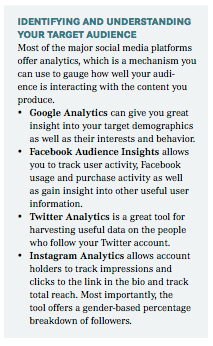Gain Social Leverage to Increase Your Client Base
Thriving veterinary practices today make great use of social media. Here’s how to engage with new and prospective clients online.

Social platforms have become so deeply integrated into the digital marketing mix that today they are the primary source for brand discovery. It doesn’t matter if you are a small-time veterinarian or a global brand like Amazon or Starbucks, if you don’t get your social media right, then you are going to miss out on a lot of brand marketing dividends.
The big draw of social marketing is that social media is vibrant and has very diverse audience segments.
For the same reason, social marketing is also one of the toughest marketing strategies to master. The big question for your veterinary brand is this: How can you leverage social media in a way that will make you stand apart from the competition?
RELATED:
- Grow Your Practice Through Social Media
- The Digital Path to Client Education and Compliance
Understand Your Social Audience
The first and most important rule in social media marketing is to understand your audience. When you really know your social audience, engaging with them and meeting their expectations becomes much easier. Be sure you can answer these questions:
- What are their backgrounds?
- On what social platforms are they active?
- What are their likes, preferences and pain points?
- How can your brand address their expectations and alleviate their pain points?
- What kind of content are they interested in, and where and how do they consume social content?
- What kind of brand interactions interest them?
- To what kind of messaging do they respond?
This kind of detailed intelligence is crucial to engaging with and converting potential clients. If you can meet their expectations with each post, your audience can become your strongest brand ambassadors. Each of the social media platforms offers insight you can use to answer these important questions. (See Identifying and Understanding Your Target Audience.)

Plan and Implement Social Strategies
To reap the maximum benefits of your social media strategies, you need to carefully craft campaigns to evoke engaged responses.
Here’s how:
- Research what topics interest pet owners the most, and develop content around those topics.
- Ensure that your content is customized to your target audience’s preferences.
- Use different content formats to give your content a more universal appeal as well as higher consumption and share potential.
- Tailor content to align with the social platform. On visual social sites such as Instagram, YouTube, Pinterest and Snapchat, it’s better to opt for a content style that is light and fun, whereas more in-depth content — such as long-form educational articles — is more appropriate on text-heavy sites such as LinkedIn.
Create a Unique Brand Voice
Build a social veterinary brand with a unique voice that aligns with your core practice values. That means making sure you cater your content based on how you want your audience to perceive your practice brand. Keep in mind that yours is a veterinary brand; obviously, you cannot imitate the voice of a fashion or travel brand.
Every piece of content you put out there is a channel for communication. The way you interact with your social audience is a big part of your unique brand voice. So, listen hard and listen well. Most importantly, remember that social media is a place for you to build relationships with your audience — not to give a sales pitch.
Future-Proof Your Social Marketing
Learn and Evolve with Your Audience
Excellent customer service is not an add-on; it should be the norm. But it takes a deep understanding of your audience to establish clear excellence in service. Social media can play a big role in helping you establish a reputation as a best-in-class client service brand. Build practice credibility by constantly engaging with your clients. For example, acknowledge and appreciate any communication from clients. Respond to any complaints you receive and provide quick resolutions. Listen to what is being said about your service or products and use it to improve your brand.
Most social users expect quick response rates and real-time issue resolution. In fact, according to the digital marketing and e-commerce consulting firm eConsultancy, 53 percent of Twitter users expect responses from the brands they follow within one hour; and that figure increases to 72 percent if their communication is a complaint. There is a clear increase in client interaction on social media. So getting client services involved could actually be a wise move.
Create a Social Media Advertising Budget
According to Business Insider, social media ad spend is expected to reach $14 billion in 2018 — more than double the $6.1 billion spent five years ago. Your clients spend a lot of time on social media, so allocate a dedicated social media advertising budget. Social media advertising can help you find new potential clients because you have access to users’ own shared information, which allows for proactive targeting even before potential clients begin their search. You also have the advantage of advanced targeting options, conversion tracking and targeting via mobile apps.
Spread Your Social Content Strategy
Mix up your veterinary social content spread. This ties in with the earlier point of understanding your audience. Having a varied client demographic means you can’t serve everyone the same type of content. So, make things fun and interesting by posting videos, articles, infographics, SlideShare slide shows and podcasts. Live-video streaming is another format that is gaining popularity. There is no doubt that any kind of video content can easily drive client engagement, so use it to your advantage. Each of these content formats can be used to address specific pet health care issues, which can lead to better social engagement.
Conclusion
Social media can be a great place for veterinary practices to build a strong brand presence and attract new clients. Social leverage is simply a matter of being where your audience is and connecting with them in a way that is both relevant to them and of value to them.

2 Commerce Drive
Cranbury, NJ 08512
All rights reserved.